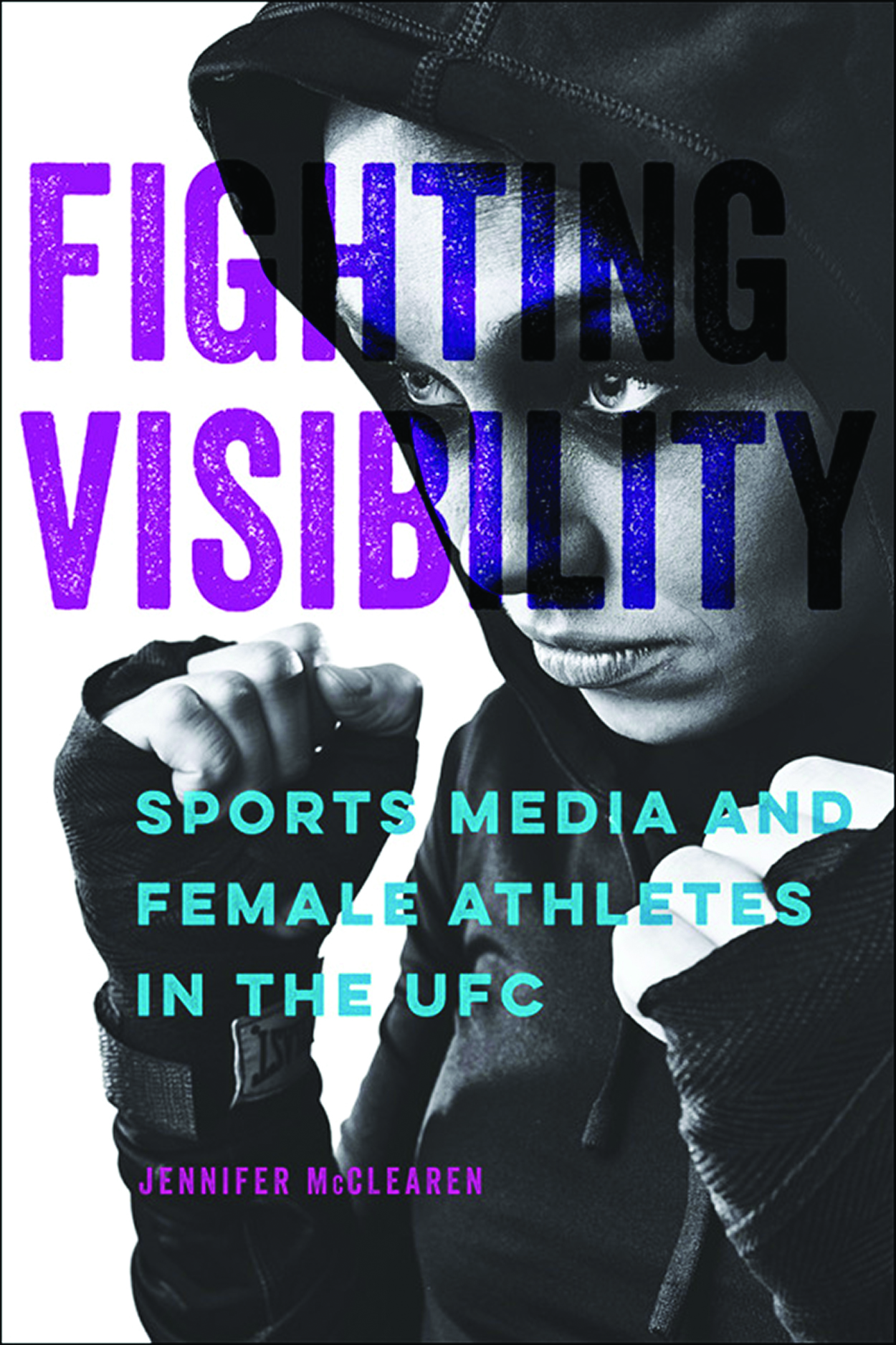Scholarship on women in sport has long focused on the relative invisibility of female athletes compared to their male counterparts. But female athletes have become increasingly visible in sports media within the last few decades. A changing media landscape has made it possible for female athletes to gain followings outside of mainstream media, and brands have gravitated toward high-profile female athletes to promote their products. In Fighting Visibility: Sports Media and Female Athletes in the UFC, Jennifer McClearen interrogates the shifts in culture and sports media industries that have allowed female athletes to become marketable and, therefore, visible. Using the Ultimate Fight Championship (UFC) as a case study, McClearen problematizes the popular assumption that visibility is the sole solution to gender inequality within sport. When the UFC began including female fighters in 2013, many saw it as a major step forward for female representation in the staunchly masculine domain of combat sports. Rather than take this expanded representation at face value, McClearen scrutinizes the material realities of female UFC fighters that are obscured by their media visibility and finds that the terms of their inclusion and promotion are violently exploitative.
McClearen uses a cultural studies approach to examine the UFC’s branding and labor practices. She positions her work within a lineage of critical race and feminist scholarship that examines diversity in representation and the market logics surrounding visibility. McClearen theorizes and utilizes the concepts of “branded difference” and “hierarchies of visibility” throughout the book. Branded difference is a marketing strategy that allows the UFC to highlight and celebrate a diverse range of female fighters while overlooking the negative consequences of increased visibility that disproportionately impact queer women and women of color. McClearen further theorizes that the dichotomy of visible and invisible is no longer applicable to the position of women in sport. Instead, female athletes are situated within hierarchies of visibility that privilege those who are white, straight, and gender conforming. These hierarchies of visibility highlight how certain female athletes are elevated and championed as harbingers of gender equality while many of their non-normative peers are left vulnerable to exploitation and economic precarity.
Fighting Visibility’s chapters unfold logically as McClearen’s analysis shifts focus from the brand strategies of the UFC to the material working conditions of the organization’s fighters. Chapter 1 provides background on the UFC and its development into what McClearen calls a “millennial sports media brand.” The UFC’s millennial brand attempts to engage directly with audiences through a variety of media channels, adopting digital promotional strategies that are familiar and appealing to the millennial generation. McClearen then pivots to the UFC’s “We Are All Fighters” campaign to demonstrate how the organization brands difference to target millennials. Although initially a campaign to support LGBTQ organizations, the phrase eventually came to encompass all kinds of difference within the UFC, conflating the unique discrimination experienced by female fighters with an individualized and formulaic notion of adversity common to all fighters.
Chapter 2 delves into the ambivalence of the UFC brand. McClearen acknowledges that the presence and success of female fighters have affective power and can be deeply meaningful and inspirational for female fans and prospective fighters. Focusing on Ronda Rousey, she analyzes how the UFC employs the rhetoric of female empowerment in its promotional materials. Rousey’s visibility may be inspiring, but McClearen suggests that this is another brand strategy meant to generate an emotional attachment to the UFC. This brand attachment is particularly salient for female fighters, who will be more willing to make sacrifices and endure abuse under the auspice of empowerment. McClearen then turns toward the underlying labor conditions within the UFC. She argues that empowerment rhetoric conceals the struggles of female fighters who will never achieve the same success as a star like Rousey.
Chapter 3 continues to expand on why female fighters are continuously drawn to the UFC despite the promotion’s exploitative labor practices. McClearen critiques the myth of the American Dream that has enfolded female fighters into neoliberal logics of individual merit and work ethic. She describes how fighters’ status as contract labor leaves them vulnerable and unprotected. Fighters, for instance, are required to shoulder the financial burdens of healthcare and training without a guaranteed payout should their fight fall through. Despite this exploitative labor model, many fighters remain ambivalent about their treatment, maintaining that as a business the UFC has a right to maximize its profits.
McClearen’s analysis of the relationship between the UFC’s brand and labor practices culminates in Chapters 4 and 5. Chapter 4 incorporates interviews with UFC fighters to understand the role of gendered labor in fighters’ use of social media. Female fighters describe the many hours of work involved in maintaining an engaging social media presence. Their social media labor is entirely uncompensated by the UFC even though the brand is the primary beneficiary of this labor. McClearen further exposes the extent to which racial and sexual identity impact female fighters’ ability to build followings as well as the amount of online abuse they receive. Hierarchies of visibility are reproduced on social media when white, straight, and gender-conforming fighters gain greater visibility for less labor. Social media provides a direct line of access to fighters that UFC fans routinely exploit by sending offensive and sexually explicit content. McClearen argues that this labor is primarily aspirational and a product of fighters’ precarity within the organization. In Chapter 5, McClearen argues that unionization provides a potential way forward for fighters. She focuses on current efforts to unionize and obstacles to organizing fighters. Because of the precarity of their positions and the individual nature of the sport, many fighters are reluctant to voice support for a union in fear of being cut entirely from the organization. Here, McClearen turns toward the political value of visibility, arguing that media attention could generate public support for a collective bargaining agreement.
Fighting Visibility is a vital contribution to research examining representation within sports media industries. McClearen urges scholars to move beyond dichotomous notions of visibility and to consider the cultural and material consequences of being seen. To celebrate the growing prominence of female athletes as absolute progress is to ignore deeper structural inequalities that remain intact within sport institutions. Women’s participation in sport has historically been plagued by sexual misconduct, abuse of power, and untenable working environments. It is imperative that researchers, activists, and fans who are invested in women’s sport acknowledge the labor of female athletes and dismantle the structures of power that obfuscate and fail to compensate their labor. Centering the well-being and lived experience of female athletes, McClearen’s Fighting Visibility provides a strong foundation on which to build a sustained critique of the relationship between media visibility and exploitation.
Notes
- Maggie Brooks is a graduate student in School of Journalism and Mass Communication at the University of Iowa. Her research interests lie at the intersections of gender, sport, and media. ⮭


